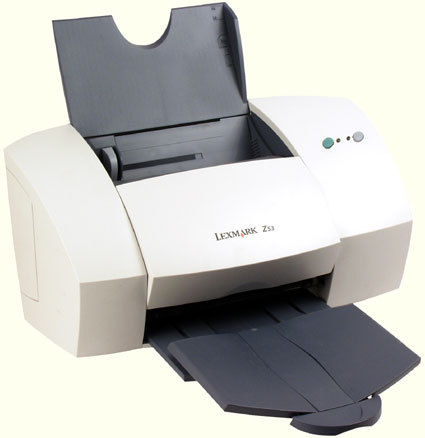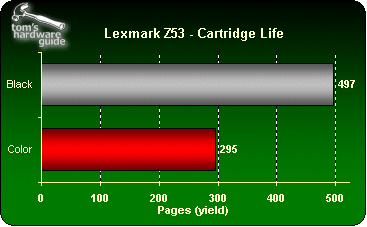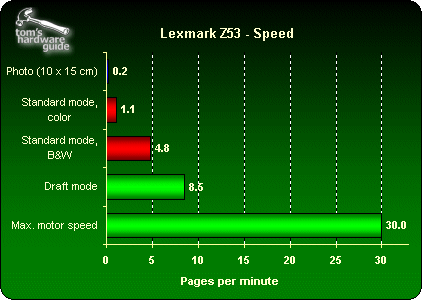Attractive Features: General-Purpose Inkjet Printers
Lexmark Z53
Like the Z43, the Z53 uses sets of 4- or 6-color cartridges depending on whether you are printing office documents or photos.
As we saw above, the Z43 can often hold its own against its rivals. This doesn't mean that it doesn't have its weaknesses, though, especially in speed.
This summer, the Z53 had more trouble because its price range pitted it against the Canon S500, Epson C70 and Deskjet 940c. This resulted in a price drop to $130, like the Z43.
Comments on the Z43 print quality also apply here. The Z53 uses the same cartridges as the Z43, but the Canon, Epson and HP printers mentioned above give the same results as those on the previous pages (i.e. the S300, C60 and 932c). Overall, the Z53 is overall a bit below its rivals.
To sum up:
- Text printing in default mode is short on precision.
- The draft mode is adequate, meaning that it's better than Epson but not as good as Canon or HP. The resulting pages cannot be used in a business context.
- In default mode, color blocks and shades lack continuity and uniformity.
- Photos should be printed with the photo cartridge. When this is so, the results are good but too bright, even when the driver is configured for "natural" colors. They tend to be too red and the blues lack tone.
- Black and white photo prints are excellent.
- The ink dries slowly in photo mode.
- The dots are visible.
- Photo prints on 80 g/m² paper are poor.
It was only to be expected that costs per page for the Z43 and Z53 would be fairly similar. The Z53 works out to $719 at 3000 pages.
With the same print quality and cost per page, the main rival of the Z53 turns out to be the Z43. Only the printing speed separates them, and here the Z53 has the advantage.
Get Tom's Hardware's best news and in-depth reviews, straight to your inbox.
Thus, its motor is much faster, although the tests for color and monochrome text result in a fairly small difference. But there is one test where the Z53 is much faster than the Z43: A4 photos come out twice as fast but their quality is the same.



